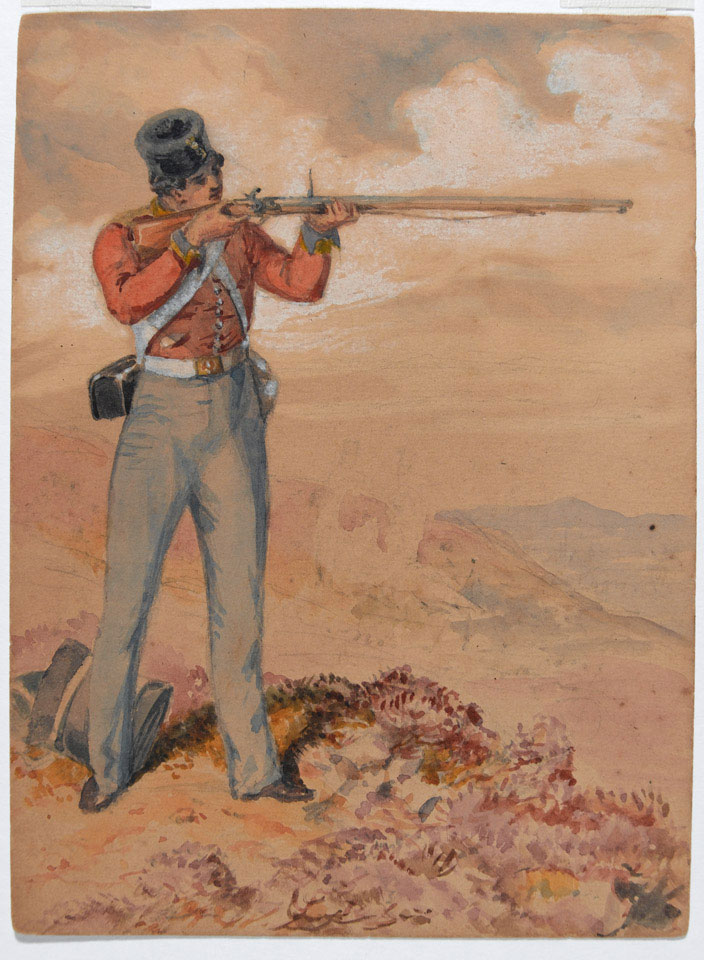
Online Collection
« Prev - 1 of 1 results - Next »
'Rifle Practice in Ireland in 1848 with old "Brown Bess" - warranted to hit at 90 yards!', 1848
Watercolour by Ensign Henry John Wilkinson, 9th (The East Norfolk) Regiment of Foot, 1848.
Soldier of the 9th (The East Norfolk) Regiment of Foot , undress uniform, firing musket, 1848.
The Long Land Pattern, commonly called the 'Brown Bess', was the standard British Army musket for most of the eighteenth century. As most male citizens of the American colonies were required to own a musket for militia duty, weapons like this would have been in common use on both sides during the American War of Independence (1775-1783). The Brown Bess weighed about five kilograms and fired a ball weighing about 40g. It had an effective range of about 80m. Muskets were most effective when they were fired in volleys (large numbers of men all firing at the same time).
Wilkinson served with the 1st Battalion 9th (The East Norfolk) Regiment of Foot. After Staff College Wilkinson purchased a commission as an ensign on 23 May 1848. He purchased a commission as a lieutenant on 31 October 1851 and was promoted to Captain on 6 January 1855. Wilkinson served in the Crimean War, at the Siege of Sevastopol, 1854-1855. He went on to rise to the rank of lieutenant colonel.
NAM Accession Number
NAM. 1972-07-6-75-1
Copyright/Ownership
National Army Museum, Out of Copyright
Location
National Army Museum, Study collection
Object URL
https://collection.nam.ac.uk/detail.php?acc=1972-07-6-75-1

